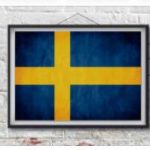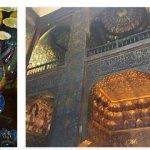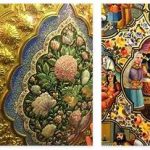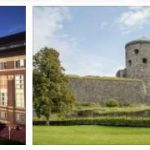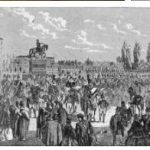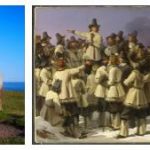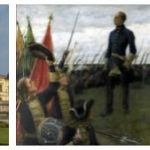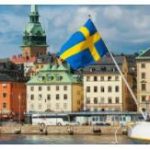In 1681, with the nomination of Nicodemus Tessin the Younger as royal architect, a period of clear predominance of the Roman Baroque taste began, which had its greatest expression in the Royal Palace of Stockholm, the artist’s masterpiece. Swedish painting of the seventeenth century kept the national traditions alive, personified by the portraitists Holger Hansson and Cornelius Arendtz, but it also opened up to a renewal due to both the presence in Sweden of foreign masters, and (from 1644) to the patronage of Queen Cristina who maintained intense contacts with the centers of European culture. Among the major personalities are the portrait painter David Beck, the history painter Jürgen Ovens and above all David Klöcker Ehrenstrahl (linked to Baroque illusionism, but also an excellent animalist and landscape painter) and Martin Meytens. The presence of the Dutchman in Sweden Govert Camphuysen, author of still lifes and genre scenes, greatly contributed to the birth of the Swedish realistic tradition. At the end of the century. XVII and during the first years of the following there was a general slowdown in artistic activity, also due to the emigration of numerous artists. Only around 1730, with the resumption of the works for the Royal Palace in Stockholm, under the guidance of the architect K. Hårleman, there was a revival in artistic activity, characterized by the introduction in Sweden of the Rococo style, to which the presence in the country of the French painter G. Taraval, who had numerous students. Among the followers of Hårleman the eldest can be considered CF Adelcrantz who, after having built the delightful Rococo castle of Drottningholm, later adhered to a style of more severe grandeur, eventually becoming an advocate of neoclassicism. While the sculpture of the century. XVIII does not offer particular interest, more vast and varied is the pictorial production, in which different influences are intertwined. In the first half of the century G. Lundberg, A. Roslin and CG Pilo fully adhered to the French style Rococo, while J. Sevenbom was the first great Swedish landscape painter. Rococo motifs, not without English derivations, continued to dominate during the reigns of Gustav III and IV thanks to the work of various artists among which Niklas Lafrensen (N. Lavreince), who successfully devoted himself to gallant painting. At the end of the century the neoclassical taste was established, introduced by the sculptor JT Sergel, the draftsman CA Ehrensvärd and the painter L. Masreliez, who was inspired by the Pompeian painting and the grotesques of Raphael in the interior decorations. In the sec. XIX Swedish art underwent an evolution substantially similar to that of other European countries. In architecture, the first great neoclassical architect was E. Palmstedt, author of various public buildings in Stockholm.
According to thesciencetutor, neoclassicism remained dominant for a long time, although towards the middle of the century F. Blom started a transformation, recovering forms and materials of traditional Swedish architecture. Subsequently, eclectic motifs spread, especially Romanesque and Gothic. The nineteenth-century sculpture is substantially modest, usually of heavy neoclassical style, from which even its best exponent, JN Byström, rarely gets free.. In painting, after a romantic phase linked to the recovery of Germanic mythologies (JA Malmström, ME Winge) and to the landscape (JG Sandberg, CJ Fahlcrantz), the so-called Düsseldorf school (1840-70) developed, formed by Swedish artists who moved to that cities, which cultivated a realistic-popular art. Around 1880 the influence of French painting also made itself felt in Sweden, especially in the work of the Cezannian CF Hill. In the sec. XX, Swedish architecture, after a period of uncertainty in which the most diverse trends intertwined, saw, around 1930, the prevalence of rationalist currents, derived, but not without originality, from the Bauhaus. The major exponents of this functional architecture, inserted in careful urban planning, can be considered EG Asplund and SG Markelius. Extraneous to the events of the Second World War, Swedish architecture has followed a continuous development characterized by a strong social awareness and a particular attention to design. The economic development of the 1960s marked a period of professional uncertainty, losing the traditional constructive reference and making the way of prefabrication necessary. Only a few architects have maintained an interesting design level such as R. Erskine and C. Nyren. Since the 1970s, the elements of tradition have been considerably re-evaluated, reinterpreted in a modern and postmodern key. Modern Swedish painting and sculpture have naturally been influenced by the various trends present in the European artistic environment, from cubism to abstract art (G. Adrian-Nilsson), to informal: P. Dahl, Ph. Von Schantz and B. Lindström are among the best known names. A place of its own is occupied by the sculpture of C. Milles and by C. Eldh. At the beginning of the 21st century we are witnessing an intense work of experimentation, free from adherence to particular artistic currents. Of particular importance, in Swedish contemporary art, are the sectors of graphics and especially industrial design, which has found happy expression in works in wood and in crystal.

